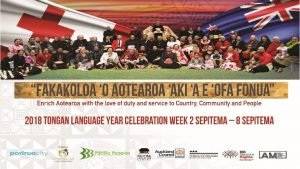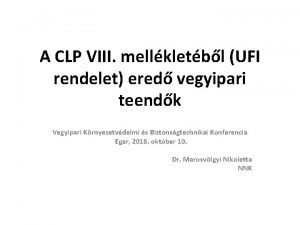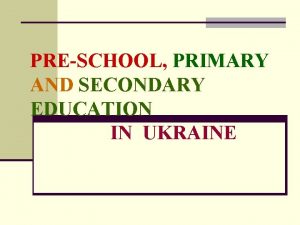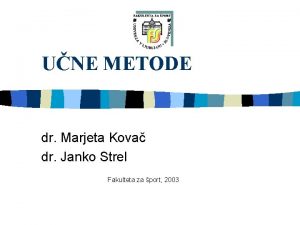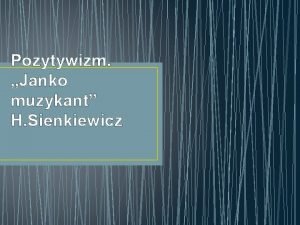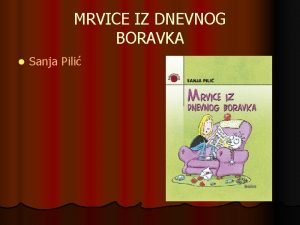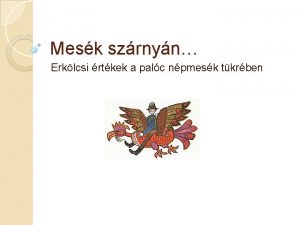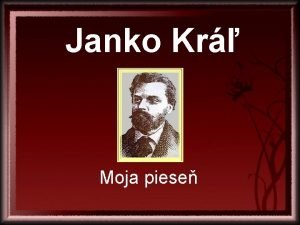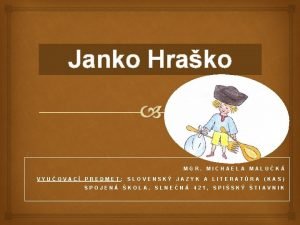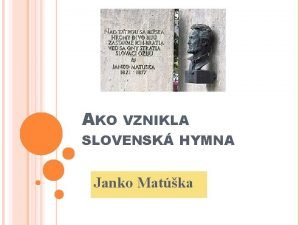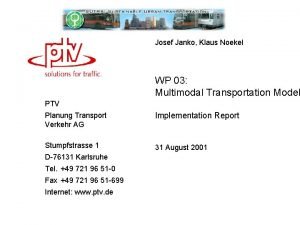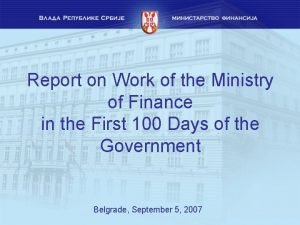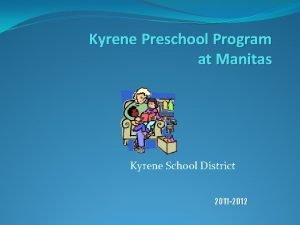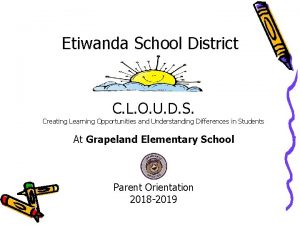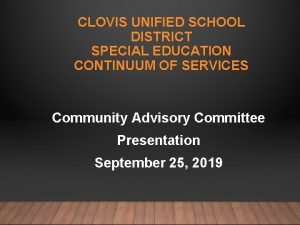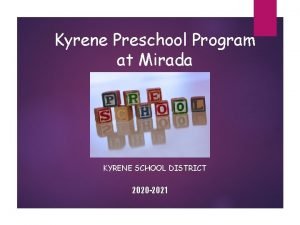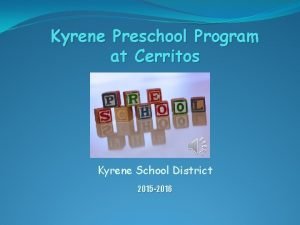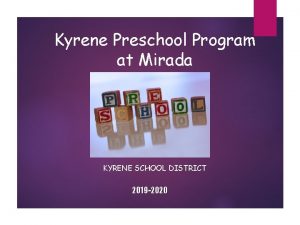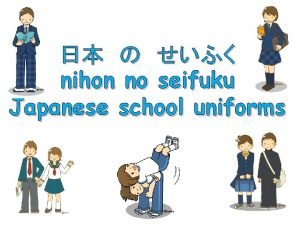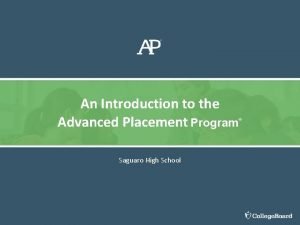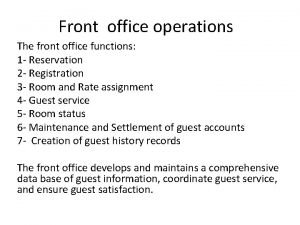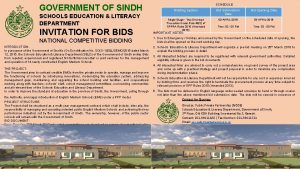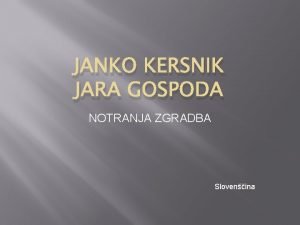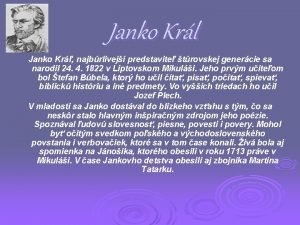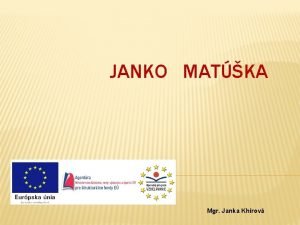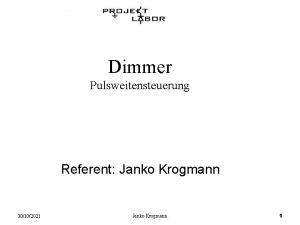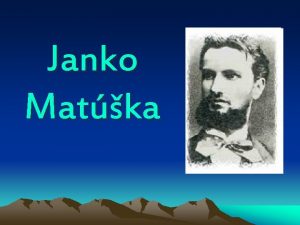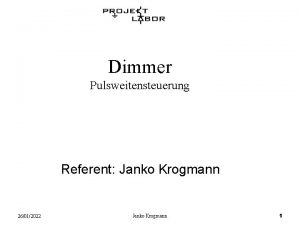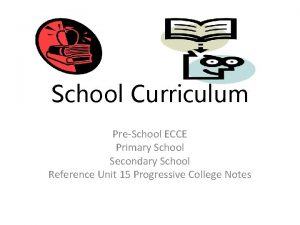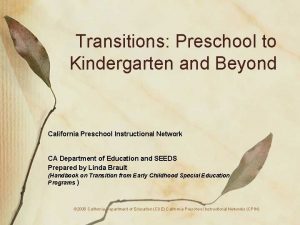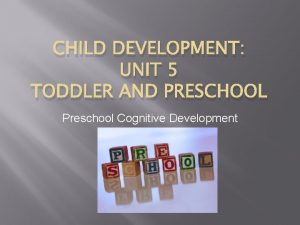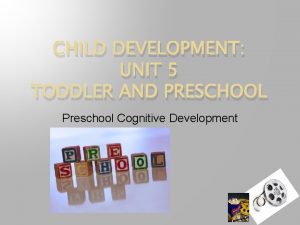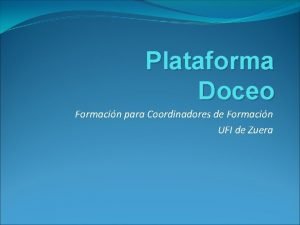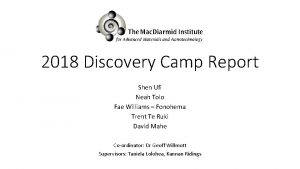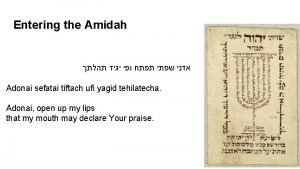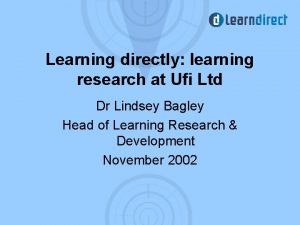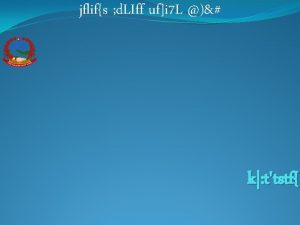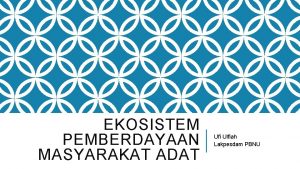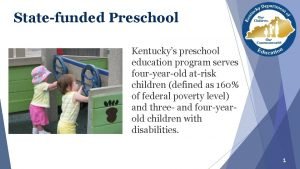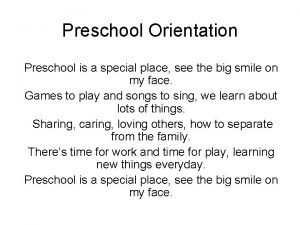Janko ufi Department of preschool and primary school

























- Slides: 25

Janko Žufić Department of pre-school and primary school teaching University Juraj Dobrila, Pula Damir Kalpić Department of applied computing Faculty of electrical engineering and computing University of Zagreb Adapting e-learning materials to students' intelligence type Žufić - Kalpić - DAAD - 12 th Workshop Opatija 2 - 9 September 2012

Introduction • How to adapt e-material to be equally effective for each student? Students differ in: foreknowledge learning style intelligence. . . Žufić - Kalpić - DAAD - 12 th Workshop Opatija 2 - 9 September 2012

The adaptability of e-materials • Students will learn most effectively if the ematerial is adapted to suit them. • Criterium for adjustment: intelligence • The most frequent models / theories of intelligence structures are : • • • Multiple Intelligences (Gardner, 1983. ) The Triarchic Model (Stenberg, 2003. ) Structure of Intellect Model (Guilford 1967. ) The Tree-Stratum Theory (Carroll, 1993. ) Two-factor' theory of intelligence (Spearman, 1927. ) – For almost every model / theory there are developed numerous tests of intelligence Žufić - Kalpić - DAAD - 12 th Workshop Opatija 2 - 9 September 2012

Research • Students of eighth grade in 10 elementary schools in Istria - Croatia (> 500 students) • Intelligence of students tested • The division of students into four groups With the strongest verbal factor - Verb Factor with the strongest non-verbal -No. Verb With the strongest mathematical-logical factor ML Control group consisted of three previous - Cont Žufić - Kalpić - DAAD - 12 th Workshop Opatija 2 - 9 September 2012

Creating 3 e-materials – one each for every group of students - based on guidelines from the literature Žufić - Kalpić - DAAD - 12 th Workshop Opatija 2 - 9 September 2012

Creating 3 e-materials Development of e-material for the 4 th (control) group: the above guidelines do not apply Žufić - Kalpić - DAAD - 12 th Workshop Opatija 2 - 9 September 2012

Results • 19. 34% better results verb groups • 14. 16% better results No. Verb groups • 19. 94% better results ML groups from the control group (the significance level P=0. 05) Žufić - Kalpić - DAAD - 12 th Workshop Opatija 2 - 9 September 2012

Development of Edu. Psy • In adaptive hypermedia Edu. Psy system, there are functionality tests of intelligence developed individually for each student (optional) • E-materials are created for each individual student, based on the tests of intelligence results, learning styles and other elements Žufić - Kalpić - DAAD - 12 th Workshop Opatija 2 - 9 September 2012

Testing the intelligence on the computer Žufić - Kalpić - DAAD - 12 th Workshop Opatija 2 - 9 September 2012

Entry of learning materials into the Edu. Psy System • The teacher of the course does not have to possess advanced IT knowledge. • Teacher spends extra time to prepare materials Žufić - Kalpić - DAAD - 12 th Workshop Opatija 2 - 9 September 2012

Entry materials for learning in the system Edu. Psy The structure of the teaching units Name of the modul Button to create the questions on a passage (new win dow) Button to create a new paragraph Editor Paragraph: Enter / edit text Prioritization section Highlight terms … Insert audio, video, pictures Enter keywords Space for st udent’s or other files questions Insert a link to the Internet, other sources of interesting games, Chat Žufić - Kalpić - DAAD - 12 th Workshop Opatija 2 - 9 September 2012

Data storage in MS ACCESS Name of the particles The content of the particles Date of material Teachers ID Žufić - Kalpić - DAAD - 12 th Workshop Opatija 2 - 9 September 2012 priority of occurrence

Design of e-materials • The application pulls the known parameters of student’s: – – Intelligence Learning style Combination of text and background color How many times the student had to go through the teaching material – Success of self-testing – Priorities of reccurenies … and displays material adapted to each student using about 15 CSS files (Cascading Style Sheets) with DIV containers and attributes Žufić - Kalpić - DAAD - 12 th Workshop Opatija 2 - 9 September 2012

Division of the screen Žufić - Kalpić - DAAD - 12 th Workshop Opatija 2 - 9 September 2012

Division of the screen Žufić - Kalpić - DAAD - 12 th Workshop Opatija 2 - 9 September 2012

Principles of design of e-materials ML Teaching strategies The application in the Edu. Psy System PROGRAMMED TEACHING To divide the text into smaller units To receive feedback To direct the activity of an individual to the right direction To continue only if the self test is successful To set teaching goals Up to 1000 characters of text (2 -4 paragraphs) Self-tests with feedback Comments on Self-Testing If a student does not pass the self-test, repeat the whole learning process for each unit and present the teaching goal HEURISTIC INSTRUCTION To apply the strict structure of teaching materials and encourage the discovery of new content Set up a hierarchical table of contents Set up links to instructional materials marked with 'Level: Advanced', 'internet', 'Other sources' PROBLEMS’ CLASSES Cooperation, brain-storming, creating an alternative to other persons Setting up links: E-mail, chat with colleagues, go to the Forum and Facebook SOCRATES' METHOD Asking questions to get the answer Highlight certain concepts Ask questions that will direct students to seek answers. Highlight important concepts through B, I, U and font color Žufić - Kalpić - DAAD - 12 th Workshop Opatija 2 - 9 September 2012

"Mathematical-logical" materials Asking questions (Socratic method) Hierarchical Table of contents links to additional materials Communication You are here Self-tests Žufić - Kalpić - DAAD - 12 th Workshop Opatija 2 - 9 September 2012

Principles of e-material’s design Non. Verb Teaching strategies - Pictures, - Videos, - Illustrated books - Use different colors and sizes for text and highlight key words or concepts - Pictures or sketches at the beginning - Visit the places where the course content can be seen - Imaginative games The application in the Edu. Psy system - Use as many pictures - Use the video - Use the illustrated PDF, Flash, animation, or similar file - Highlight key words and concepts in a different color and size and place them in textboxes - Put a picture or sketch of the beginning of the course content - Links to the materials 'Internet', 'video, “ and "Other Sources' - Link to the game - if available Žufić - Kalpić - DAAD - 12 th Workshop Opatija 2 - 9 September 2012

“Non. Verbal" materials Videos Animations and games

Principles of e-material’s design Verbal Teaching strategies - Highlight key words - Ask questions that require answers in the form of essays. - Ask questions that begin with 'how‘, 'why' and 'what' - Love to listen to new content - Questions that are answered in one word - Explain / narrate the topic which is discussed - Set up links to answers The application in the system Edu. Psy - Formation of the B, I, U, and font color - Questions that require answers in the form of essays. - Ask questions that begin with 'How', 'What' and 'Why' - Insert the audio content of the teaching material if available - Ask questions that require a short answer - Ask students to recount what was taught and recorded without explanation. The students should listen to the recording. - Set up links to instructional materials marked with 'Advanced', 'internet', 'Other sources' Žufić - Kalpić - DAAD - 12 th Workshop Opatija 2 - 9 September 2012

“Verbal" materials Audio contents Žufić - Kalpić - DAAD - 12 th Workshop Opatija 2 - 9 September 2012

Verbal e-materials recording audio content Feedback, wrong Feedback, correct Feedback recommendations t o continue or not Žufić - Kalpić - DAAD - 12 th Workshop Opatija 2 - 9 September 2012

Results • Tests of the 1 st year Teaching Education students at the Juraj Dobrila University at Pula, indicate 11 -17% better performance of the students who learned with adaptable e-materials than the results of the control group Žufić - Kalpić - DAAD - 12 th Workshop Opatija 2 - 9 September 2012

Conclusion - Teacher utilizes extra time to prepare teaching materials -Learning efficiency is better Žufić - Kalpić - DAAD - 12 th Workshop Opatija 2 - 9 September 2012

• Questions? Comments? Žufić - Kalpić - DAAD - 12 th Workshop Opatija 2 - 9 September 2012
 Moana ufi
Moana ufi Pcn bejelentés
Pcn bejelentés Ukraine nursery school
Ukraine nursery school Janko strel
Janko strel Geneza nazwy pozytywizm
Geneza nazwy pozytywizm Citati iz lektire mrvice iz dnevnog boravka
Citati iz lektire mrvice iz dnevnog boravka Lusta jankó
Lusta jankó Ponáška
Ponáška Osnova janko hrasko
Osnova janko hrasko Janko matuška hymna
Janko matuška hymna Mletačka dalmacija
Mletačka dalmacija Josef janko
Josef janko Janko guzijan
Janko guzijan Kyrene school schedule
Kyrene school schedule Clouds program etiwanda school district
Clouds program etiwanda school district Contents training clovis
Contents training clovis Kyrene preschool
Kyrene preschool Kyrene preschool
Kyrene preschool Kyrene mirada
Kyrene mirada Department of primary industries and mines
Department of primary industries and mines Japanese university uniform
Japanese university uniform Saguaro infant care and preschool
Saguaro infant care and preschool Basic function of front office
Basic function of front office Sindh education and literacy department
Sindh education and literacy department The webinar will begin shortly
The webinar will begin shortly Pre k curriculum california
Pre k curriculum california
